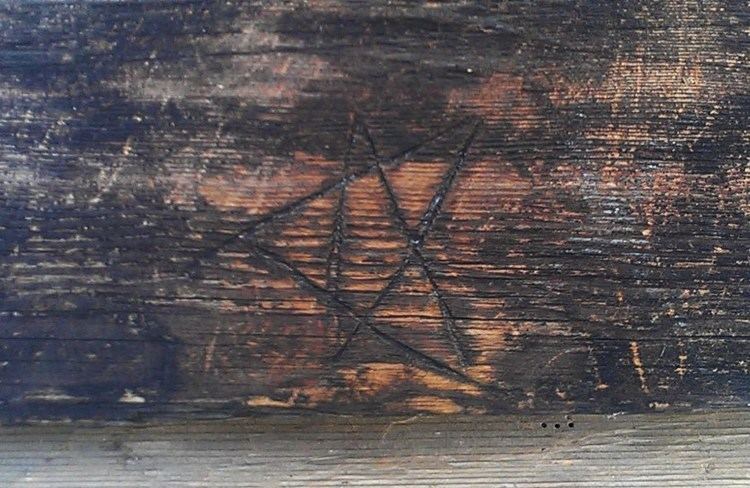 | ||
Apotropaic marks are symbols or patterns scratched into the fabric of a building to keep witches out. They are sometimes called witches' marks, a term also used to denote identifying marks once thought to be found on the bodies of witches.
Marks on buildings
Apotropaic marks (from Greek apotrepein "to ward off" from apo- "away" and trepein "to turn") are symbols or patterns scratched into the fabric of a building with the intention of keeping witches out through apotropaic magic. Evil was thought to be held at bay through a wide variety of apotropaic objects such as amulets and talismans against the evil eye. Marks on buildings were one application of this type of belief.
Marks have been found at Shakespeare's Birthplace in Stratford-upon-Avon, at the Tower of London, and many churches, but little effort has been made to find them on secular buildings. The marks are most common near places where witches were thought to be able to enter, whether doors, windows or chimneys. For example, during works at Knole House in 1609, oak beams beneath floors, particularly near fireplaces, were scorched and carved with scratched witch marks to prevent witches and demons from coming down the chimney. At the Bradford-on-Avon Tithe Barn, a flower-like pattern of overlapping circles is incised into a stone in the wall.
Other types of mark include the intertwined letters V and M or a double V (for the protector, the Virgin Mary, alias Virgo Virginum), and crisscrossing lines to confuse any spirits that might try to follow them.
